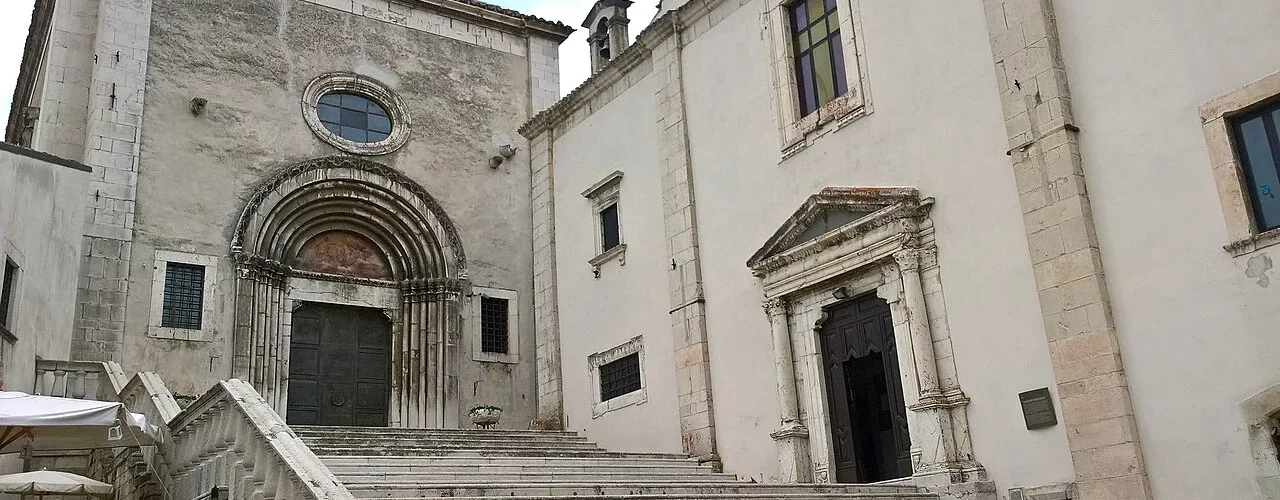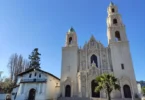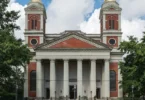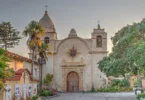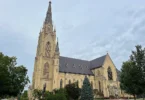Introduction
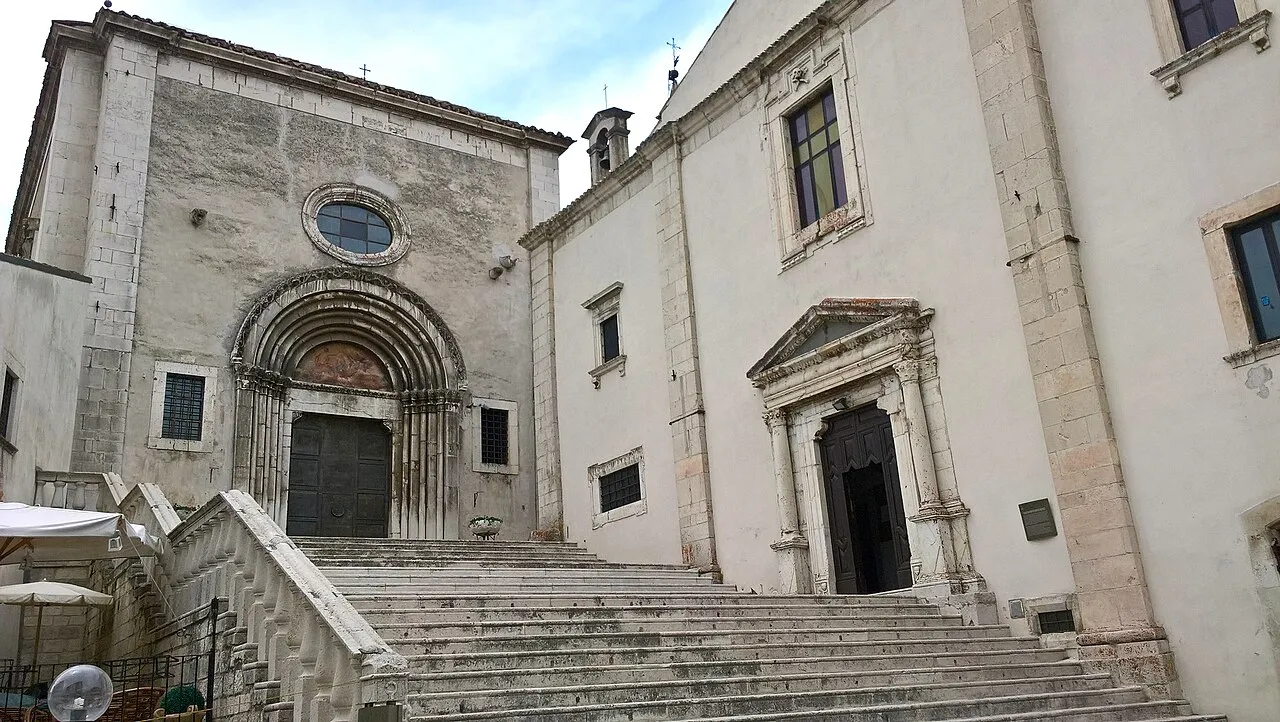
The Basilica of Santa Maria del Colle is the parish church of Pescocostanzo, a picturesque town in the province of L’Aquila, located in the Abruzzo region of central Italy. This stunning church, a prime example of Renaissance architecture, holds both historical and religious significance for the town and its surrounding area. The Basilica is dedicated to Santa Maria del Colle, the patron saint of Pescocostanzo, and its impressive structure and artistic treasures attract both pilgrims and tourists alike. Nestled in the heart of the Majella Mountain range, Pescocostanzo offers a serene and scenic backdrop to this majestic church. The Basilica reflects the architectural style of the Renaissance, with a harmonious blend of classical elements and regional influences. Throughout its long history, the church has undergone several renovations and restorations, adding to its charm and significance. Visitors can admire the beauty of its intricate stonework, ornate altars, and the religious artworks that grace its interior.
Serving as the spiritual center for the local community, the Basilica of Santa Maria del Colle has been a place of worship for centuries. Its strategic location atop a hill offers panoramic views of the surrounding countryside, symbolizing both its spiritual prominence and its connection to the natural beauty of the region. Today, the Basilica remains an important landmark, both as a place of faith and as a cultural heritage site in the heart of the Abruzzo region.
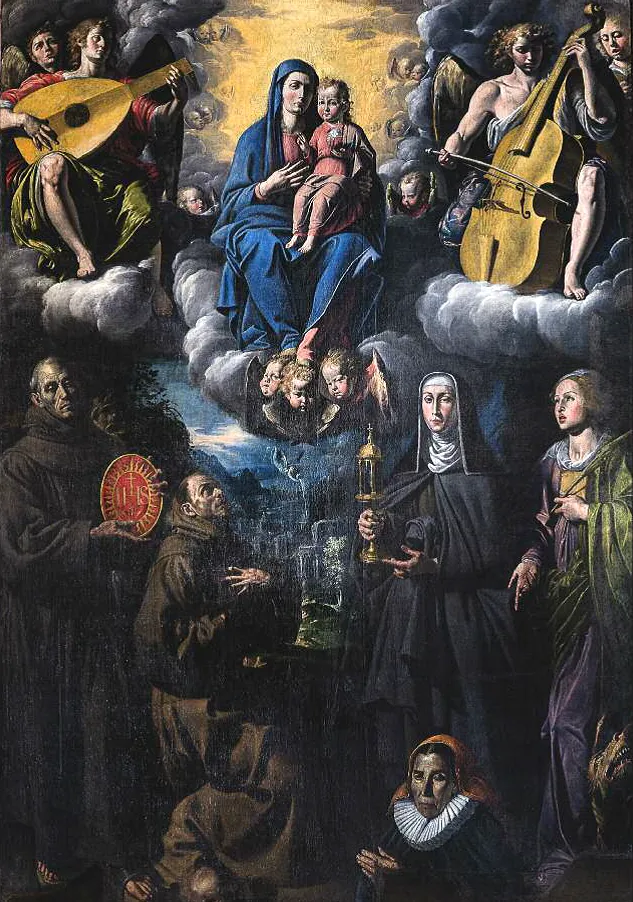
Early Origins and Reconstruction After the Earthquake
The history of the Basilica of Santa Maria del Colle dates back to the 11th century, when the first temple was constructed. Originally, the church was dependent on the Montecassino Abbey, situated outside the town center on a hill known as the Peschio. The parish church, on the other hand, fell under the jurisdiction of the Bishop of Sulmona. This early structure played an important role in the spiritual life of the area, but in 1456, it was tragically destroyed by a devastating earthquake. Following the destruction, efforts to rebuild the church began, and by 1466, the new church was completed in a more central location within the growing town. The reconstruction also marked a significant shift as the church became the parish seat, which helped to solidify the village’s connection to the Diocese of Cassino, linking it more closely to the larger ecclesiastical structure of the region.
Renaissance Expansion and Renovation
Between 1556 and 1558, significant changes were made to the church’s architecture. The building was expanded, transforming it into a structure with five naves and four bays, a vast improvement over the earlier design that had consisted of only three naves and three bays. During this period, a new Renaissance-style façade was also constructed, which overlooked a large terrace. This renovation marked the beginning of the church’s evolution into the grand structure that we see today. In 1580, the Romanesque-Gothic portal from the original church was moved to the northern entrance of the basilica. This entrance, now at the top of a flight of stairs, serves as a reminder of the church’s long and varied history.
Later Additions and the Chapel of the Sacrament
Between 1691 and 1694, another important addition was made to the basilica—the Cappellone del Sacramento (Chapel of the Sacrament). This chapel became an important part of the church’s interior, contributing to the rich artistic and religious heritage of the building. The church’s bell tower, dating back to the late 16th century, underwent significant restoration work in 1635 and 1855. The restoration in 1855 included replacing the original octagonal spire with a quadrangular one, giving the tower its current appearance.
Elevation to Minor Basilica
Over time, the church continued to serve as a central place of worship, eventually being designated as a Collegiata. This recognition was an important step in its growing prominence in the region. In 1978, the church received an even higher honor when it was elevated to the status of a minor basilica, a title given to churches that hold particular importance due to their historical, religious, or architectural significance. Today, the Basilica of Santa Maria del Colle stands as a key religious and cultural landmark in Pescocostanzo, a testament to its long history of growth, restoration, and spiritual significance.
Architecture of Basilica of Santa Maria del Colle, Pescocostanzo, Italy
Architectural style : Baroque architecture, Renaissance architecture.
Central Nave
The interior of the church is characterized by its stone architecture, accentuated by the vibrant polychromy of the furnishings. The space is brought to life through the presence of intricately carved, painted, and gilded wooden statues, including the 13th-century Madonna del Colle. Additionally, there are various altars, the pulpit, and the choir loft, all contributing to the church’s aesthetic richness. The choir loft is a notable work by Bartolomeo Balcone from Rome-Sulmona, dating back to 1619. The ceilings throughout the church are adorned with five coffered designs, primarily crafted by Carlo Sabatini from Anversa degli Abruzzi between 1670 and 1682, and completed by 1742.
The antependia and baptismal font, made from marble, are credited to local craftsmen Panfilo Rainaldi and Filippo Mannella. Several paintings are housed within the basilica, with works attributed to Tanzio da Varallo, such as the Madonna dell’incendio sedato. Other significant painters represented include Giovanni Paolo Cardone and Francesco Peresi. The vault of the Chapel of the Sacrament features a fresco by Giambattista Gamba from Naples. A 16th-century panel depicting the Madonna and Saints by Palma il Vecchio was stolen during the German occupation of 1943–44.
A majestic wrought iron gate, created by Sante di Rocco of Pescocostanzo, began construction in 1699 and was completed by his nephew Ilario in 1707. This gate includes representations of human, angelic, and animal figures. The architrave of the craftsman’s workshop at the foot of the steps bears the motto “ETENIM NON POTUERUNT MIHI” (“and yet they could not conquer me”). The bronze eagles adorning the holy water stoups are by Cosimo Fanzago. The choir, the Chapel of the Sacrament, and the altar of Saint Elizabeth are decorated with stucco work by Lombard artisans Gianni and Ferradini.
Exterior Architecture
From its elevated position, the church offers a commanding view over the town below through two distinct facades. These facades follow the late Romanesque Aquilan style, typical of Abruzzo. The facades have a horizontal termination from the 13th and 14th centuries, with lateral stone pilasters contrasting against a plastered background. The northern side facade, preceded by a staircase leading up from the main street, features a two-tiered arrangement of openings. This portal, inspired by the main churches of L’Aquila such as San Silvestro, San Pietro di Coppito, Santa Maria di Collemaggio, and Santa Maria di Paganica, consists of three orders of semicircular frames, culminating in a larger projecting frame with rosettes and acanthus scrolls.
The main facade is more intricate, following a tripartite scheme with a central portal and rose window, flanked by rectangular windows of Renaissance design. Additionally, two smaller oval windows are symmetrically placed above the rose window. The portal, dated 1558, consists of two orders. The lower order is made up of two fluted pilasters with Corinthian capitals, while the upper order frames a lunette. A high entablature caps the portal. The church is designed with a longitudinal plan comprising five naves, based on Renaissance principles, while 18th-century Baroque interventions have been added. The side bell tower is rectangular in shape and closely resembles those of Santa Maria della Misericordia in Pacentro and Santissima Trinità in Popoli, topped by a pyramidal spire.
Chapel of the Blessed Sacrament
The Chapel of the Blessed Sacrament is located at the third bay near the presbytery, facing the side entrance. It serves to enhance the grandeur and brightness of the church. The chapel was constructed at the end of the 17th century and painted by Giambattista Gamba, an artist active in the early 18th century in Sulmona, Chieti, and Penne. The chapel has a rectangular plan with rounded corners, topped by an oval dome supported by four arches, each with large windows. Within the chapel are three altars: one of wood and two made of marble.
Altar of Santa Maria del Colle: This altar is made of marble and consists of a dossal created by Lombard artisans between 1568 and 1569, with a table crafted by Pescocostanzo craftsmen in the 18th century. The dossal was originally part of the main altar of the church but was moved to the chapel after the relics of Saint Felice da Cantalice were transferred from Rome. The dossal is intricately carved, with no exposed surfaces, and features a bas-relief of the Assumption of the Virgin, surrounded by clouds and cherubs. The marble altar’s author is uncertain but may be Panfilo Ranalli or Nicodemo Mancini.
Altar of the Most Holy Rosary: This 16th-century wooden altar is located to the right of the chapel’s entrance. It consists of a marble base, with a wooden edicule containing an altarpiece of the Madonna of the Rosary, created by Paolo Cardone of L’Aquila in 1580. The chapel is further enhanced with stucco decorations, depicting Prophets and Cardinal Virtues, attributed to Gian Battista Gianni and Francesco Ferrandini. The ceiling, painted by Francesco Antonio Borsillo and later modified by Giambattista Gamba in 1721, depicts “Glory in Paradise.” The design follows the architectural shape of the dome, with layers of clouds spiraling toward the top. In the center is Christ blessing, surrounded by angels bearing the Cross. The chapel is enclosed by a wrought iron gate designed by Norbero di Cicco and crafted by blacksmith Santo di Rocco between 1699 and 1705, completed in 1717 by Ilario di Rocco. The gate features 33 square-section wrought-iron bars and has a frieze with symbolic scenes, including cherubs, monstrous figures, and angelic depictions representing the victory of Good over Evil.
Baptistery and Pulpit
To the left of the internal staircase, the baptistery is enclosed by a wrought iron gate designed by Ilario di Rocco in 1753, reflecting Rococo style. At the center stands a circular marble baptismal font, created by Filippo Mannella in 1753 using Neapolitan marble. The font is supported by a tripod base, adorned with colored marble inlays and cherub sculptures. The font is topped with a polychrome wooden sculpture depicting the Baptism of Christ. Flanking the staircase are two holy water stoups created in 1622, consisting of marble basins and bronze eagles. These are thought to be the work of Cosimo Fanzago due to their expressive naturalism and innovative design. The holy water stoups echo the naturalistic qualities of Fanzago’s other works, such as the pulpit at the Cathedral of Milan.
In the central nave, a wooden pulpit stands attached to one of the pillars. Crafted by Bartolomeo Balcone, a Roman artist who lived in Sulmona, the pulpit is made of walnut wood. It features carved panels decorated with vegetal and anthropomorphic motifs, framed by Ionic pilasters. Below, a winged cherub supports the carved frames. A canopy with a coffered design, matching the pulpit’s shape, crowns the structure. The figure of the Madonna is prominent at the top. Similar in style, two other Baroque works are linked to the pulpit.
The Badalone and Choir Loft
The badalone is situated at the center of the choir and serves as a lectern. Made of smooth wood, the badalone features rounded corners and is adorned with carved friezes depicting telamons and caryatids. It is believed to have been crafted by Balcone or one of his apprentices. The choir loft occupies the entire wall of the counter-façade in the central nave. Built in 1612, it is a beautifully carved, gilded, and colored wooden structure that houses a large organ. The organ consists of 12 registers arranged in three towers, with the central tower being the tallest. The arches on either side are decorated with fluted semi-columns, with richly worked entablatures at the top. The central arch is supported by a wooden structure flanked by volutes and capped with a broken circular pediment.
The organ loft shares design similarities with the pulpit and badalone, suggesting a common origin. The choir is divided into six symmetrical panels, with a wooden display at the center mimicking a miniature organ. The panels feature anthropomorphic figures and are framed by friezes of plant motifs. The decoration of the choir is more elaborate than the pulpit, employing pearls, dentils, and ovolos to create a richer, freer composition.
The ceilings of the Basilica of Santa Maria del Colle are among the most stunning features of the church, showcasing intricate artwork and architectural design that span several centuries. The most notable ceiling is located in the central nave, which was constructed between 1670 and 1682 under the direction of architect Carlo Sabatini. This ceiling is renowned for its ornate decoration and is considered the richest in the church.
The Central Nave Ceiling
The central nave ceiling is an elaborate design featuring gilded woodwork, which was crafted by the brothers Gioacchino and Giuseppe Petti of Oratino. The ceiling’s structure is made of carved, lacquered, and gilded wood, and it is divided into 85 coffers of varying shapes—round, rectangular, and mixtilinear—designed specifically to hold canvases painted by Giovannangelo Bucci. The frames around these coffers are richly decorated with motifs of ovules and leaves, adding a sense of opulence to the design.
The ceiling layout is notable for its complexity, with eight large, mixtilinear coffers arranged transversally in pairs that disrupt the continuous sequence of rectangular panels. The deep coffers give the ceiling a sense of depth, creating the impression that the paintings seem to sink into the sky. The choice of a light blue background symbolizes the opening of the ceiling towards Heaven, while red tones dominate the scenes, which feature joyful angels singing, playing music, and scattering flowers. These paintings create a vision of Paradise, invoking a heavenly atmosphere. The design of this ceiling closely resembles other notable Baroque ceilings, such as those found in the Chapel of the Holy Rosary at San Domenico in Penne and in the Basilica of San Bernardino in L’Aquila.
The ceilings of the adjacent side naves were also initiated in the same period (1670) but were completed in 1742. They follow a similar layout to the central ceiling, consisting of coffers framed by painted canvases featuring vegetal and zoomorphic motifs. Four large rectangular panels were incorporated into the design, with biblical scenes painted on canvas. While the ceiling of the left side nave closely mirrors the central ceiling, the one on the right is more disorganized and features larger, unadorned wooden compartments, with canvases attributed to Remigio Sabatini (1718).
The Dome and Octagonal Structure
The ceiling is crowned by an octagonal dome, which is another striking element of the basilica’s architecture. The dome is covered with frescoes attributed to Giambattista Gamba, who also worked on the frescoes in the Chapel of the Blessed Sacrament. The frescoes on the dome feature a variety of shapes—round, oval, and mixtilinear—and depict scenes from the life of the Virgin Mary. The central fresco in the dome showcases the Assumption of the Virgin into Heaven, surrounded by a host of angels. This design conveys a sense of divine elevation, with the Virgin’s ascent symbolizing her journey into the celestial realm. The stucco decoration in the dome was created by Giambattista Gianni and Francesco Ferrandini, who contributed to the intricate detailing that enhances the visual grandeur of the space.
The Altars of the Basilica
The altars of the Basilica of Santa Maria del Colle are notable for their architectural beauty and the artistic richness of their decorations. Along the right aisle, there are several altars dedicated to various saints, including Saint Paul, Saint Anne, and the Madonna of Pompeii, all dating from the 18th century.
Key Altars and Their Features
The altar of Saint Paul is particularly distinctive due to its antependium, which has been replaced by a marble ark, while the antependium of Saint Anne is beautifully crafted with light-colored plant motifs set against a dark background. The altar of the Madonna of Pompeii, designed by Ranalli in 1717, takes inspiration from the work of Norberto di Cicco, particularly the altar of Saint Anthony in the Church of Jesus and Mary in Pescocostanzo. The head altar of the Madonna del Colle is located at the head of the lateral nave and dates from the 17th century. Its design is marked by a richly carved and gilded wooden structure, consisting of two parts. The lower area is highly gilded and forms a prominent aedicule with a curved and broken tympanum. The upper part features a more restrained aedicule with a triangular tympanum. The altar houses the Madonna del Colle, a 12th-century statue that is one of the oldest wooden statues in Abruzzo.
The altar of San Felice da Cantalice is another important feature of the basilica, created by Giuseppe Cicco in 1668. The marble antependium is decorated with symmetrical vegetal motifs, and the altarpiece is adorned with cherubs, typical of the style of Fanzago. Other altars include those dedicated to the Holy Trinity, the Crucifix, and Santa Caterina, with several altars displaying artworks by notable artists, including Tanzio da Varallo.
The Church of the Suffrage of the Dead
Adjacent to the basilica is the Church of the Suffrage of the Dead, which dates back to the 16th century. The facade of the church follows a typical Abruzzo design, divided into three sections by flat pilasters. The 17th-century portal is marked by a triangular tympanum and flanked by two skulls in a Baroque style. Inside, the church houses a sumptuous altar in carved walnut, created by Palmerio Grasso between 1647 and 1649, and completed by Ferdinando Mosca in 1716. The wooden coffered ceiling dates from 1637-39, with the paintings on canvas created by Bernardino D’Alessandro and Falconio Falconi. The church also contains torch holders crafted by Rocco Falconio in 1693.
Curiosities
A notable curiosity about the basilica is its practice of baptism ceremonies, which are celebrated according to the Ambrosian Rite, a tradition brought to the area by Lombard artisans who immigrated to Pescocostanzo in the 15th and 17th centuries. Additionally, the steps outside the basilica were featured in the 1968 film, Straziami ma di baci saziami, starring Nino Manfredi, adding an element of cinematic history to the site.
Feast Day
Feast Day : 15th August
The feast day of the Basilica of Santa Maria del Colle in Pescocostanzo, Italy, is celebrated on August 15th, in honor of the Assumption of the Blessed Virgin Mary. This feast commemorates the belief that the Virgin Mary was assumed into heaven, body and soul, at the end of her earthly life. It is one of the most important Marian feast days in the Catholic Church and is especially significant at the Basilica of Santa Maria del Colle, where the statue of the Madonna del Colle, a key religious symbol, is venerated. The celebration typically involves a procession, special Masses, and various local festivities.
Church Mass Timing
Yet to Update
Church Opening Time:
Monday : 8:30 am – 12:30 pm., 3:30 pm – 7:00 pm.
Tuesday : 8:30 am – 12:30 pm., 3:30 pm – 7:00 pm.
Wednesday : 8:30 am – 12:30 pm., 3:30 pm – 7:00 pm.
Thursday : 8:30 am – 12:30 pm., 3:30 pm – 7:00 pm.
Friday : 8:30 am – 12:30 pm., 3:30 pm – 7:00 pm.
Saturday : 8:30 am – 12:30 pm., 3:30 pm – 7:00 pm.
Sunday : 8:30 am – 12:30 pm., 3:30 pm – 7:00 pm.
Contact Info
Address :
Via Falconio Diomede, 1, 67033 Pescocostanzo AQ, Italy.
Phone : +390864641430
Accommodations
Connectivities
Airway
Basilica of Santa Maria del Colle, Pescocostanzo, Italy, to Aquino Airport, distance between 1 hr 44 min (98.6 km) via Strada Statale 17.
Railway
Basilica of Santa Maria del Colle, Pescocostanzo, Italy, to Sulmona Railway Station, distance between 41 min (39.6 km) via Strada Statale 17.

